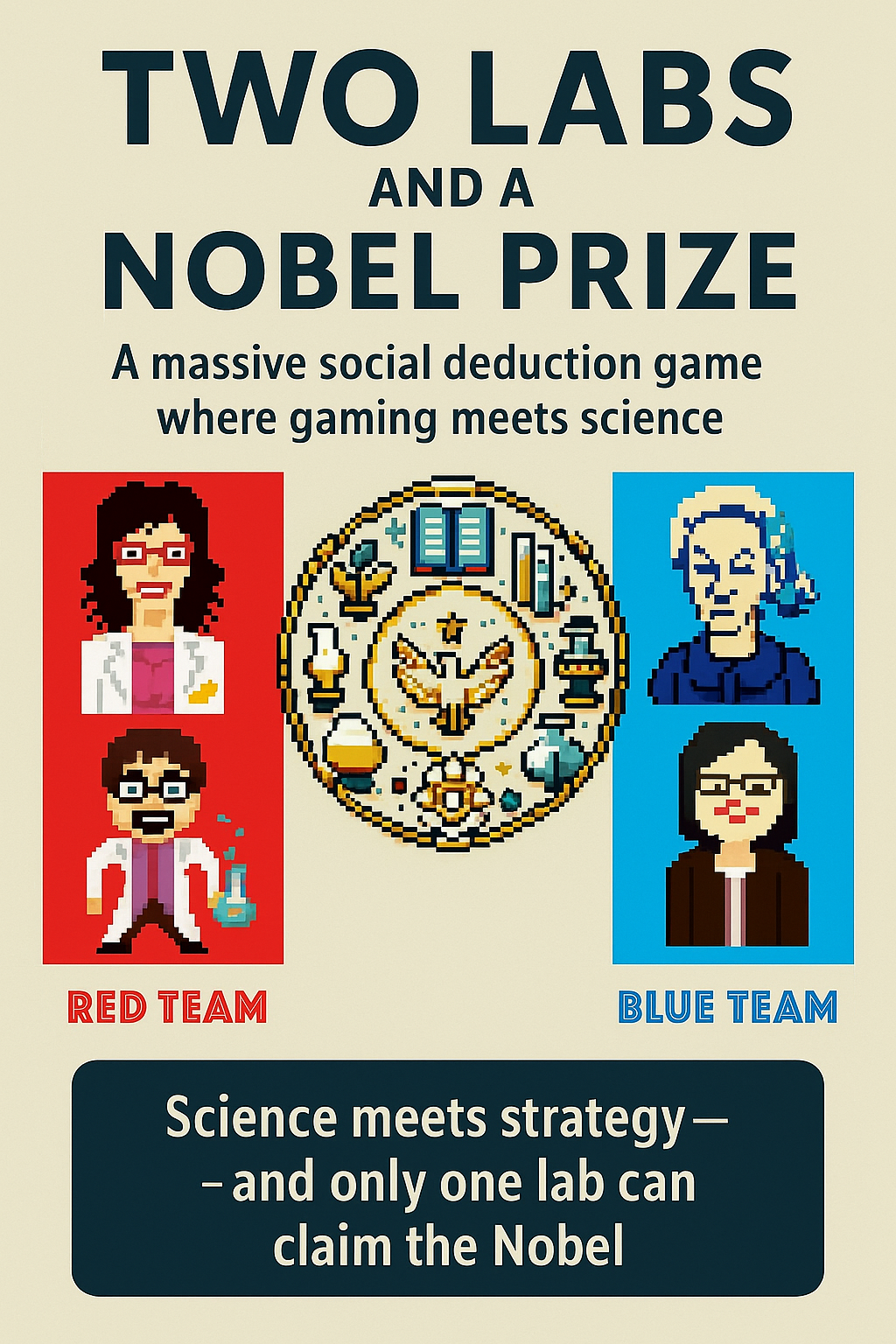Two Labs and a Nobel Prize: When Gaming Meets Science
What if the thrill of a party game could capture the messy, competitive, and collaborative reality of scientific research? That’s the idea behind Two Labs and a Nobel Prize, a large-scale social deduction game inspired by Two Rooms and a Boom. Players become scientists, technicians, professors, or students. Two labs — the Blue Team led […]







